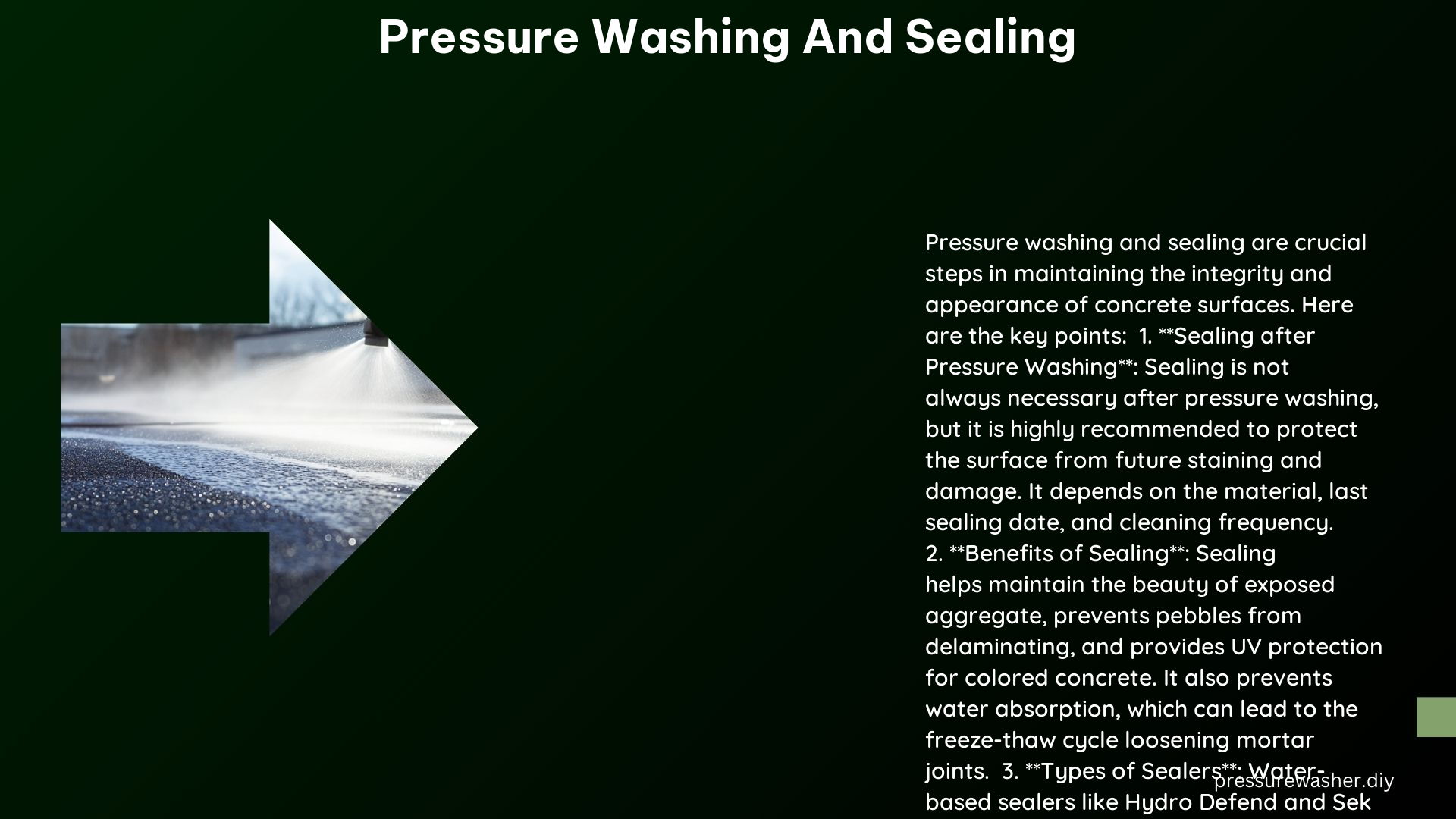Pressure washing and sealing are two essential steps in preserving the integrity and appearance of various outdoor surfaces, particularly driveways. This comprehensive guide will provide you with a deep understanding of the importance of sealing after pressure washing, the best sealants to use, and the optimal frequency for reapplying sealant to ensure your surfaces remain protected and looking their best for years to come.
Importance of Sealing After Pressure Washing
Pressure washing is an effective way to remove dirt, grime, and other contaminants from outdoor surfaces, but it does not provide long-term protection. Sealing the surface after pressure washing is crucial to safeguard it from stains, damage, and erosion. Sealants act as a barrier between the surface and the elements, making future cleanings easier and preventing stains from becoming permanent.
This is especially important for porous materials like concrete and pavers, which can easily absorb liquids and stains. Without a proper sealant, these surfaces are vulnerable to weathering, discoloration, and premature deterioration.
Benefits of Sealing

Sealing your outdoor surfaces after pressure washing offers a multitude of benefits:
- Protection from Stains: Sealants prevent stains from oil leaks, blood, and other sticky residues from becoming permanent fixtures on your surfaces.
- Easy Cleaning: Sealants create a protective barrier that prevents dirt and grime from penetrating the surface, making future cleanings a breeze.
- Preservation of Appearance: Sealants help maintain the vibrant, like-new appearance of your surfaces for years to come.
- Prevention of Mold and Dirt: Sealants inhibit the growth of mold and the accumulation of dirt, ensuring a clean and healthy-looking surface.
- UV Protection: Sealants provide a layer of UV protection, which helps preserve the color and vibrancy of your surfaces.
Best Sealants for Pressure Washing Surfaces
When it comes to selecting the right sealant for your pressure-washed surfaces, there are several high-quality options to consider:
- Hydro Defend from Sherwin-Williams: A water-based sealer that dries clear and is easy to apply with a pump sprayer. It provides a durable, long-lasting barrier against stains and weathering.
- Sek Surebond 4000: A water-based sealer that is effective for use on concrete, stone, pavers, and brick. It offers excellent protection and a natural, matte finish.
- Proprietary Siloxane-Silane Mixture: A deep-penetrating sealer used by Perfect Power Wash that creates a moisture barrier and prevents chipping and cracking. This specialized formula is designed to provide superior long-term protection.
How Often to Reapply Sealant
The frequency of reapplying sealant depends on several factors, including the material of the surface, the level of usage, and the environmental conditions it is exposed to.
Material Considerations
- Concrete: Concrete driveways typically require sealing every 2 to 3 years to maintain optimal protection.
- Pavers: Pavers may need to be sealed more frequently, often every 1 to 2 years, depending on usage and environmental factors.
- Stone and Brick: These materials can generally be sealed every 3 to 5 years, but the specific recommendations may vary based on the type of stone or brick.
Usage and Environmental Factors
- High-Traffic Areas: Surfaces that experience heavy foot or vehicle traffic may require more frequent sealing, often every 1 to 2 years.
- Harsh Weather Conditions: Surfaces exposed to extreme temperatures, heavy rain, snow, or UV radiation may need to be sealed more often, sometimes annually.
As a general guideline, it is recommended to seal concrete driveways every 2 years and pavers more frequently, depending on their usage and environmental conditions.
Technical Specifications
Pressure Washing
- For concrete surfaces over 2 years old, use a walk-behind pressure washer unit.
- Ensure the pressure washer is set to the appropriate pressure for the specific surface being cleaned, typically between 3,000 and 4,000 PSI.
- Avoid using excessive pressure, as it can damage the surface.
Sealing
- Apply sealants according to the manufacturer’s instructions, taking care not to apply too heavily.
- Ensure the surface is thoroughly cleaned and completely dry before applying the sealant.
- Use a pump sprayer or roller to apply the sealant evenly across the entire surface.
DIY Tips
- Clean the Surface: Thoroughly clean the surface before applying the sealant to ensure maximum adhesion and protection.
- Choose the Right Sealant: Select a sealant that is specifically formulated for the material of your surface and follow the manufacturer’s instructions for application.
- Apply Correctly: Apply the sealant evenly and in the recommended thickness to ensure effective protection. Avoid over-application, as it can lead to a cloudy or uneven finish.
By following these guidelines and best practices, you can ensure that your pressure-washed surfaces remain protected, clean, and visually appealing for years to come.
